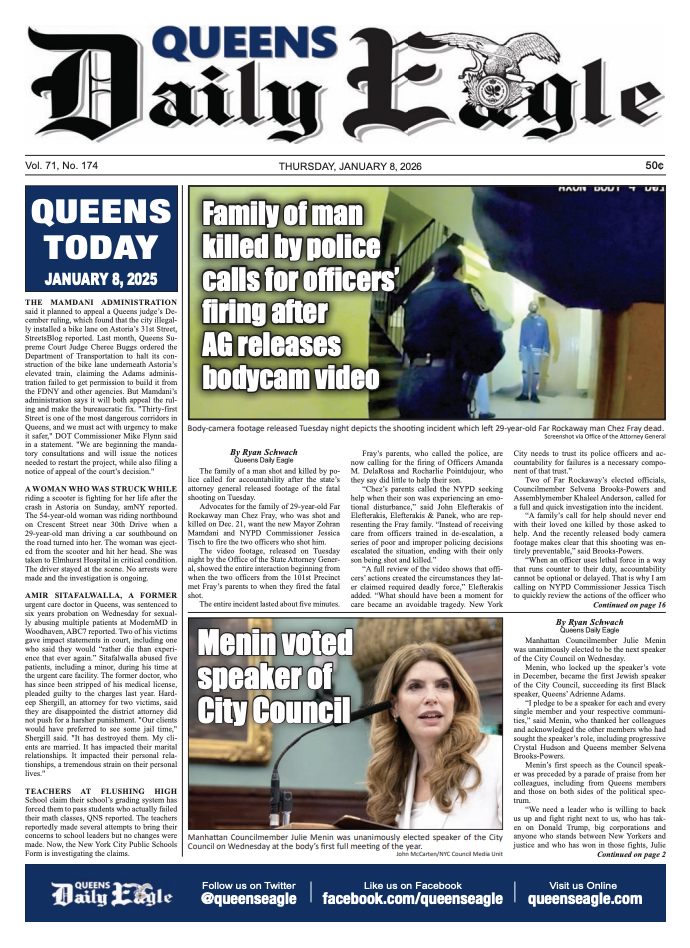Queens LIRR stations are inaccessible and in disrepair, comptroller tells MTA
/Two LIRR trains stop at the Jamaica station. Eagle photo by Jonathan Sperling.
By Jonathan Sperling
Nearly 90 million people boarded a Long Island Rail Road train in 2018, the highest number of passengers since 91.8 million people rode the rails in 1949. Every day, Queens residents, especially those lacking subway access, board the LIRR for direct trip into the city.
That ridership boom excludes many residents across Queens and Brooklyn who are still unable to use the boroughs’ 25 LIRR stations due to accessibility issues and deteriorating platforms, contends City Comptroller Scott Stringer in a letter to the agency last week.
Currently, only five LIRR stations in the two boroughs are fully ADA accessible: Atlantic Terminal, Jamaica, Woodside, Flushing and Queens Village. Stringer’s letter specifically mentions a lack of elevators at the Murray Hill LIRR station, which he called “years behind schedule and $6 million over the original budget.” Stringer also noted that the $3 million station renewal at St. Albans will not include ADA upgrades, such as an elevator.
The letter calls for elevators at these stations, as well as a concrete roadmap regarding station rehabilitation plans at the Hollis and Hunters Point Avenue stations and the construction of new stations in Elmhurst and Sunnyside. The MTA did not allocate funding for the Hollis station in the 2015-2019 Capital Budget, despite sunken, uneven floorboards on its platform, fading signage, broken ticket machines and excessive littering in the vicinity of the station, according to Stringer.
“Maintaining and providing equitable access to our public transit system is critical to building a city that works for every New Yorker. The LIRR stations in Queens and Brooklyn should be providing fast, frequent, reliable, and affordable transit to hundreds of thousands of New York City residents living beyond the subway’s reach,” Stringer said. “Instead, far too many are underutilized, inaccessible, deteriorating, and locked behind an exorbitant pay wall.”
The “pay wall” referred to by Stringer harkens back to the comptroller’s plan to reduce the LIRR fare for city stations to just $2.75, the same price as a MetroCard swipe. Currently, riders using boarding the LIRR in Queens pay as much as $12.50 for a one-way, rush-hour ticket to Manhattan and more Western parts of Queens.
The advent of the LIRR’s Atlantic Ticket, a $5 ticket good for travel between select stations in Southeast Queens and Brooklyn, has increased ridership to such stations, according to LIRR data. Stringer has also requested a full accounting of the pilot program, such as its impact on ridership at the stations, which include seven in Queens.
In a response to questions from the Eagle, a LIRR spokesperson said the agency “is committed to improving accessibility and station conditions not just in Brooklyn and Queens but throughout the entire system.”
“Details about the next capital program for the maintenance, repair and upgrade of LIRR infrastructure will be available in the coming months and the current historic reorganization of the MTA and its agencies will focus resources on customer-facing improvements more than ever before,” the spokesperson added.




